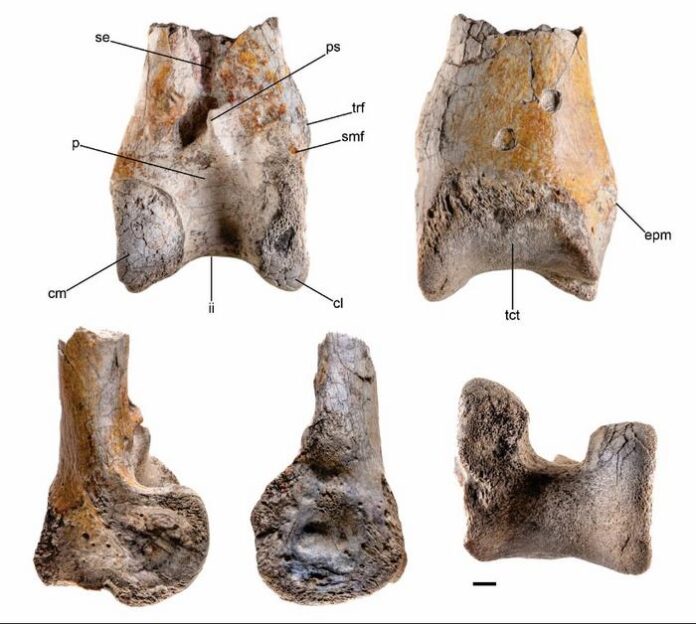A massive meat-eating bird sat high atop the food chain about 12 million years ago. Researchers analyzed a bone of the creature found in northern South America nearly 20 years ago and determined that it was likely a “terror bird” related to Phorusrhacids, according to a report in Palaeontology.
Terror birds were carnivorous, living off small to mid-sized mammals. Earlier examples of Phorusrhacid fossils grew up to 9 feet tall. But this one was likely 5 percent to 20 percent larger, based on the size of the bone the researchers studied. It is the largest such find of its kind.
A Giant Bird vs. an Apex Predator
The animal must have been a scary specimen back then. Imagine a massive ostrich- or emu-like creature with a bigger head holding both more and sharper teeth. Then imagine that bird looking at you as if you were potentially lunch.
“A giant bird that ate meat on the landscape — that’s fundamentally cool,” says author Siobhán Cooke, who studies mammalian anatomy and evolution at Johns Hopkins School of Medicine. “And it’s so outside of what we are aware of today.”
Even though this not-so-gentle “Big Bird” sat high atop the food chain, it likely met its match, getting chomped by a competing apex predator.
“There are teeth marks on the bone,” says Cooke. “They match the teeth of a large caiman.” A caiman-like relative named Purussaurus lived during that time period, and could grow up to 30 feet long.
As fascinating as the terror bird is, this find has an equally interesting origin story. Cesar Augusto Perdomo, an amateur fossil hunter, found the massive leg bone nearly 20 years ago in Colombia’s fossil-rich Tatacoa Desert. That desert sits at the northern tip of South America.
Read More: Antarctica’s Terror Bird Was an Apex Predator of the Eocene Epoch
Origin Story of the Terror Bird
However, it was not recognized as a terror bird until Perdomo opened his collection to the public in his Museo La Tormenta. In 2023, terror bird expert Federico Javier Degrange of Centro de Investigaciones en Ciencias de la Tierra, identified the leg as potentially belonging to a Phorusrhacid. Then Cooke and others scanned and analyzed the bone.
“It was a really collaborative effort,” says Cooke. “It takes a lot of people to get these kinds of paleontology projects done.”
Even though this study focuses primarily on the possible new Phorusrhacid, it is also a reminder of how completely different the South American flora and fauna looked millions of years ago. Massive ungulates like big versions of rhinos and antelope roamed the land. The landscape also included large primates, rodents, snakes, crabs — and even carnivorous marsupials.
“The overall fauna then was quite different than what we would see in a tropical forest today,” says Cooke.
And with giant terror birds and caiman-like creatures, it would also have been very scary.
Read More: What Is a Cassowary? It May be the Most Dangerous Bird in the World
Article Sources
Our writers at Discovermagazine.com use peer-reviewed studies and high-quality sources for our articles, and our editors review for scientific accuracy and editorial standards. Review the sources used below for this article:
Source : Discovermagazine







